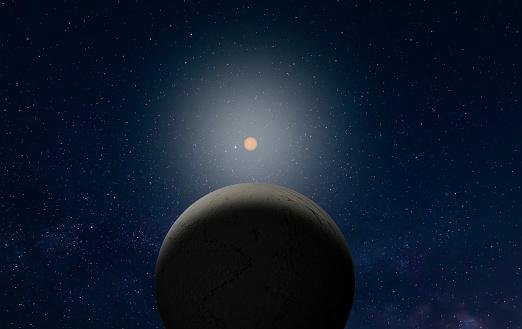In 2017, scientists at the European Space Agency, A mysterious shadow has been detected in the TW Hydrae dwarf star system, and now shadows suggestive of two baby planets under construction. In a new study published in the science journal The Astrophysical Journal, researchers explain that shadows are formed from protoplanetary disks orbiting the star, suggesting the formation of planets.
When Hubble saw the shadow for the first time, he found that the shadow rotates clockwise every 16 hours, and at the time, they believed it was the shadow of a baby planet ‘hidden’ somewhere in the region.
In 2021, Hubble made more observations of TW Hydrae, and researchers noticed that the shadows appeared to be coming from more than one disk; They believe there are three disks orbiting the star at tilt angles outside of their original arrangement. This indicates the existence of not just one, but two baby planets in the making — i.e. gravity would be the force pulling the disks and causing the skewed tilt.
Until then, no scientist had observed a protoplanetary disk with these features, according to one of the researchers on the study and astronomer at ESA, John Debes. That’s why the dwarf star system is much more complex than scientists previously believed, he says.
“When I first looked at the data, I thought something was wrong with the observation because it wasn’t what I expected. At first I was confused and all my coworkers asked what was going on. We really had to scratch our heads. And it took a while before we really found an explanation,” Debes said.
Baby planets around dwarf star
When the team of scientists analyzed data collected by Hubble in 2021, they found that the most likely explanation was that the changes were caused by a second baby planet in formation – the two would be very close together. As baby planets orbit, the three discs have divergent affinities, causing shadows to form in the farthest regions of the star.
TW Hydrae has attracted a lot of attention from scientists in recent years, as it is only 200 light-years from Earth, has about 60% the mass of the Sun, and is slightly smaller than our burning giant. The dwarf star is only 8 million years old, compared to the Sun’s 4.6 billion years.
“The two planets must be very close together. If one were moving much faster than the other, this would have been noticed in previous observations,” adds Debes.
Source: Tec Mundo
I’m Blaine Morgan, an experienced journalist and writer with over 8 years of experience in the tech industry. My expertise lies in writing about technology news and trends, covering everything from cutting-edge gadgets to emerging software developments. I’ve written for several leading publications including Gadget Onus where I am an author.













